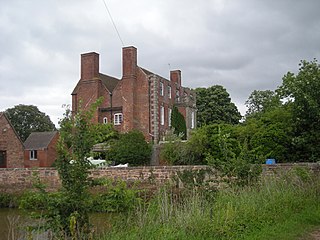Related Research Articles

Earl Castle Stewart, in the County Tyrone, is a title in the Peerage of Ireland. It was created in 1800 for Andrew Thomas Stewart, 9th Baron Castle Stuart.

Peregrine Bertie, 2nd Duke of Ancaster and Kesteven, styled The Honourable Peregrine Bertie between 1686 and 1704, Lord Willoughby de Eresby between 1704 and 1715 and Marquess of Lindsey between 1715 and 1723, was a British politician who sat in the House of Commons from 1708 until 1715 when he was called to the House of Lords.

This is a list of people who have served as Lord Lieutenant of Cambridgeshire. The title Lord Lieutenant is given to the British monarch's personal representative in the counties of the United Kingdom. Lord Lieutenants are supported by an appointed Vice Lord Lieutenant and Deputy Lieutenants. Since 1715, all Lord Lieutenants have also been Custos Rotulorum of Cambridgeshire.

Viscount Maynard, of Easton Lodge in the County of Essex, was a title in the Peerage of Great Britain. It was created in 1766 for Charles Maynard, 6th Baron Maynard, Lord-Lieutenant of Suffolk. He was made Baron Maynard, of Much Easton in the County of Essex, at the same time, also in the Peerage of Great Britain. Both titles were created with special remainder, failing male issue of his own, to his kinsman Sir William Maynard, 4th Baronet. The 1st Viscount was unmarried and on his death in 1775 the baronetcy of Easton Parva, the Irish barony of Maynard created in 1620 and the English barony of Maynard created in 1628 became extinct. He was succeeded in the barony of 1766 and the viscountcy according to the special remainder by his kinsman Sir Charles Maynard, 5th Baronet, who became the 2nd Viscount. The latter was succeeded by his nephew, the 3rd Viscount, who served as Lord-Lieutenant of Essex. He had no surviving male issue and on his death in 1865 the baronetcy, barony and viscountcy became extinct. His granddaughter, Daisy Maynard, daughter of Colonel Charles Henry Maynard and future wife of Francis Greville, 5th Earl of Warwick, succeeded to most of the Maynard estates.

Sir William Strickland, 4th Baronet, of Boynton, East Riding of Yorkshire, was an English landowner and Whig politician, who sat in the House of Commons from 1708 to 1735. He was a Government Minister in Sir Robert Walpole's administration.

Thomas Morgan was a Welsh lawyer and politician who sat in the House of Commons from 1723 to 1769.

Ralph Freman (1666–1742), of Aspenden Hall and Hamels, Hertfordshire, was an English politician who sat in the English and British House of Commons for 30 years from 1697 to 1727.
Sir Thomas Hare, 4th Baronet (1686–1760) Stow Bardolph, Norfolk was a British politician who sat in the House of Commons between 1713 and 1715.

Sir Francis Leicester, 3rd Baronet (1674–1742) of Tabley, Cheshire was a British landowner and politician who sat in the House of Commons from 1715 to 1727.

The Counsel to the Navy Department, Ministry of Defence originally called Counsel to the Navy Board was an appointed legal adviser to the Royal Navy from 1673 to 1995.
Robert Vyner (1686–1777) of Swakeleys, Middlesex, and Gautby, Lincolnshire, was a British politician who sat in the House of Commons for 27 years between 1710 and 1761.

Grey James Grove of Pool Hall, Alveley, Shropshire, was a British Whig politician who sat in the House of Commons in two parliaments between 1715 and 1741.

Edward Rolt of Sacombe Park, Hertfordshire, Harrowby Hall, Lincolnshire and Spye Park, near Chippenham, Wiltshire, was a British landowner and Tory politician who sat in the House of Commons from 1713 to 1722.

Thomas Smith, of South Tidworth, Hampshire, was a British landowner and Whig politician who sat in the House of Commons between 1709 and 1728.
Thomas Maynard may refer to:
Henry Vernon, of Sudbury, Derbyshire, was an English landowner and politician.
References
- ↑ "MAYNARD, Thomas (c.1686-1742), of Hoxne Hall, Hoxne, Suff. | History of Parliament Online". historyofparliamentonline.org. Retrieved 2023-10-18.